For a while now, Oracle has developed a cadence with the monthly releases of Oracle Enterprise Data Management (EDM). About once a quarter, the monthly release will be a “feature drop”, if you will, containing numerous enhancements. Typically, these land in March, June, September, and December of the calendar year.
Well never fear, the March 2024 (24.03) release did not disappoint. EDM 24.03 contains no less than 30 new or updated enhancements. Full details can be found at the Oracle EPM “What’s New” page.
With a product that is rapidly maturing like EDM, it is easy to miss or overlook a key enhancement that can be a benefit to your organization. I find myself struggling at times to keep up with the innovation coming each quarter (but it’s a fun problem to have!).
In this blog post, I want to mix it up a little. I want to not only highlight a few features you should probably be using but may not be aware of, but also target these highlights to a mix of functional and technical users.
Property Configuration Audit
From the Audit screen, select the Audit Type of Properties, then select one or All properties and a preset or custom date range. As with the other Audit Types, you can download the results to a formatted Excel file. The property changes will be highlighted on the screen and appear in bold font on the Excel download.
Figure 1 - Audit: Properties
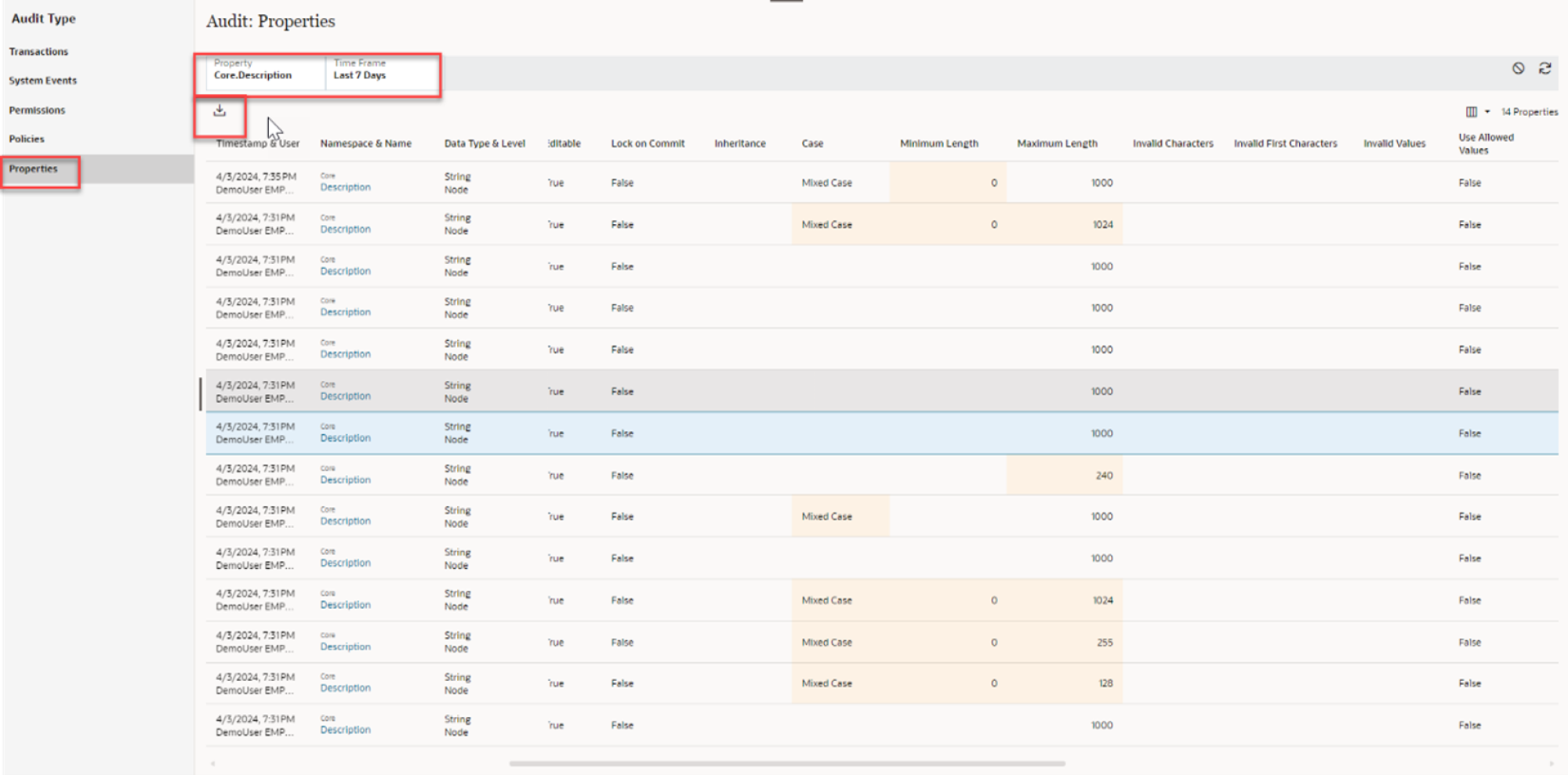
Since we are discussing audit capabilities, I might as well point out another new one. You can audit System Events, including a category called “metadata”. By “metadata”, I mean technical metadata involving EDM artifacts like data chain objects, lookup sets, and viewpoints. You can see the Create and Delete actions that have occurred on any metadata object. The usual Time Frame filters and Download feature are also available.
Figure 2 - Audit: System Events
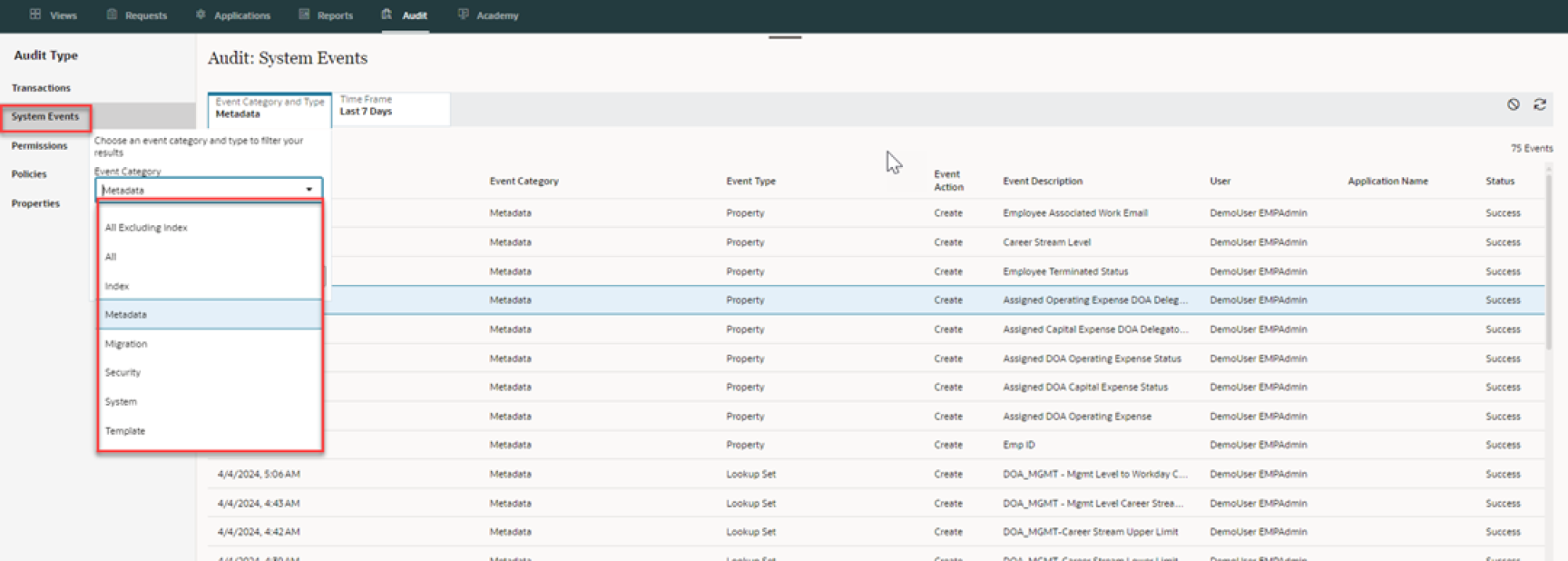
From an audit and controls perspective, these enhancements are significant. Not only can you audit transaction history to understand changes that have occurred to your hierarchies, but now you have transparency to the technical configuration changes to your EDM environment as well, providing you a 360-degree view of updates to your EDM eco-system.
Multi-Select Nodes on Insert/Move
Now this is one I’ve been looking forward to for a while now! Within a request, from the Insert Here or Move Here dialog, you can now cherry pick and select multiple nodes at once. ¡Fantástico!
Figure 3 - Select Nodes

More frequent application of policy changes
This one applies to Approval Policies. You have likely encountered situations where you need to modify an approval policy (e.g. add a user to a policy) and have that update immediately applied to in-flight requests. Previously, policy updates were applied to in-flight requests once a day. Now, they are applied every 15 minutes. And you don’t need to do anything to enable this, except be patient for 15 minutes (which is not easy for me)!
Blockout Period Enhancements
There are two important enhancements to note.
1. Recurring Blockout
You can now establish recurring blockout periods! Select the Period for blockout (month end, quarter end, year end, fiscal quarter end, or fiscal year end). Then specify the number of days before and after the period to establish your date range. Now you have established your blockout periods in advance and don’t have to remember to come back each month and update them!
Notes
- The number of days is calendar days, not work days.
- You can specify a negative number to start the blockout prior to the start of the period.
Figure 4 - Recurring Blockout Period
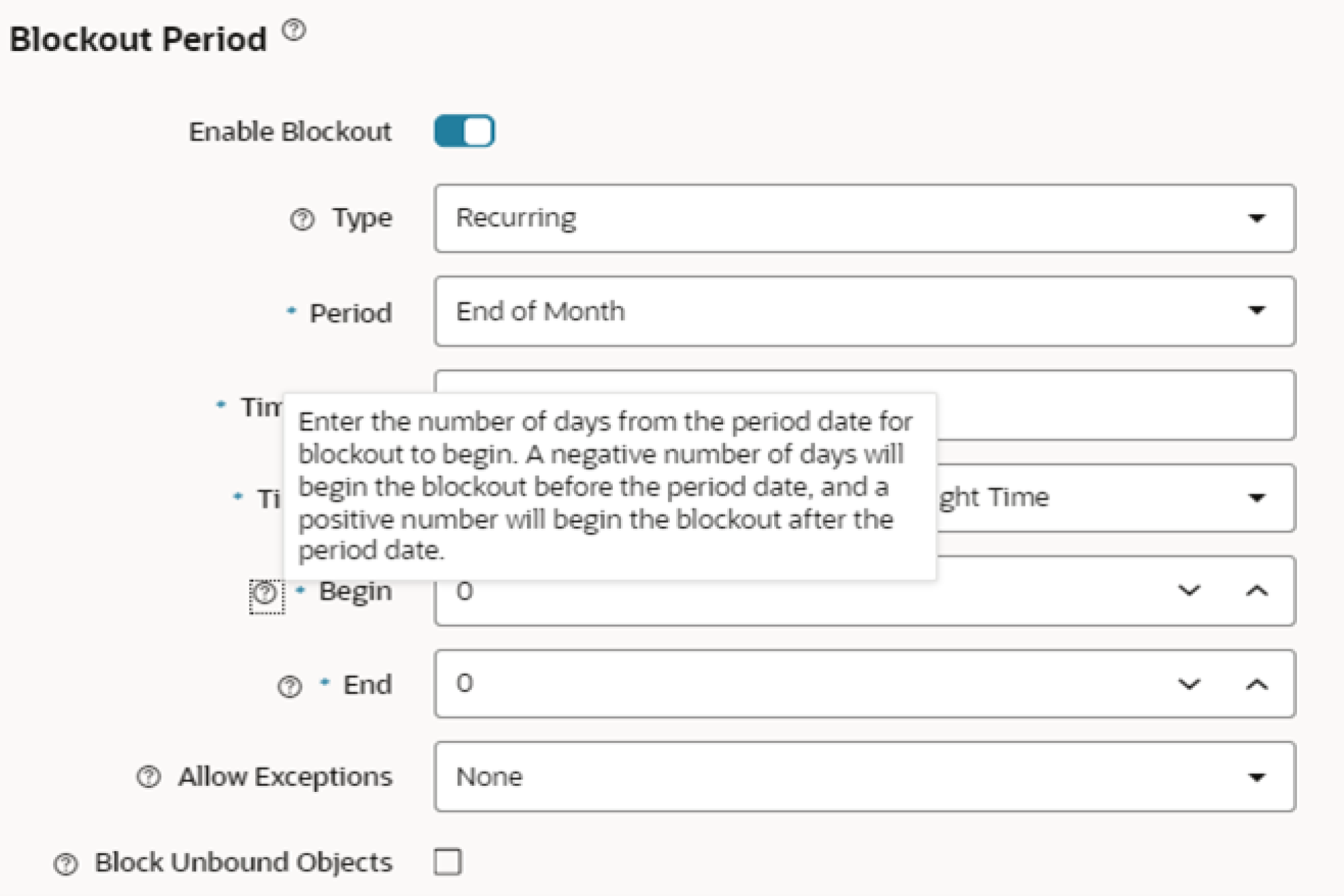
2. Dimension Blockout
Blockout periods can now be set at a dimension level, with the same options available as the Application Blockout including Recurring blockout types.
I really like this option because of the flexibility it allows. If you want to blockout most dimensions of your application but not all, set the Application Blockout first and then disable the Blockout for those dimensions that should remain “open for business”. Conversely, if you want to allow changes to most dimensions except for a critical dimension that needs to be locked down, enable a Dimension Blockout for that dimension only.
Figure 5 - Dimension Blockout Period

Calculated Node Names
One could argue I saved the best enhancement for last. I probably use the term “game changer” too often, but to me this feature qualifies for that moniker.
Let’s start with a simple example. I can modify the Default Type of Core.Name to “Calculate and Store” and create a simple expression that returns the prefix I want the node name to start with. The requester would fill in the rest of the node name and submit the request. Very easy to set up. And it avoids displaying that sometimes less than helpful “New Account” default node name that you end up overwriting anyway.
Figure 6 - Calculated Node Names
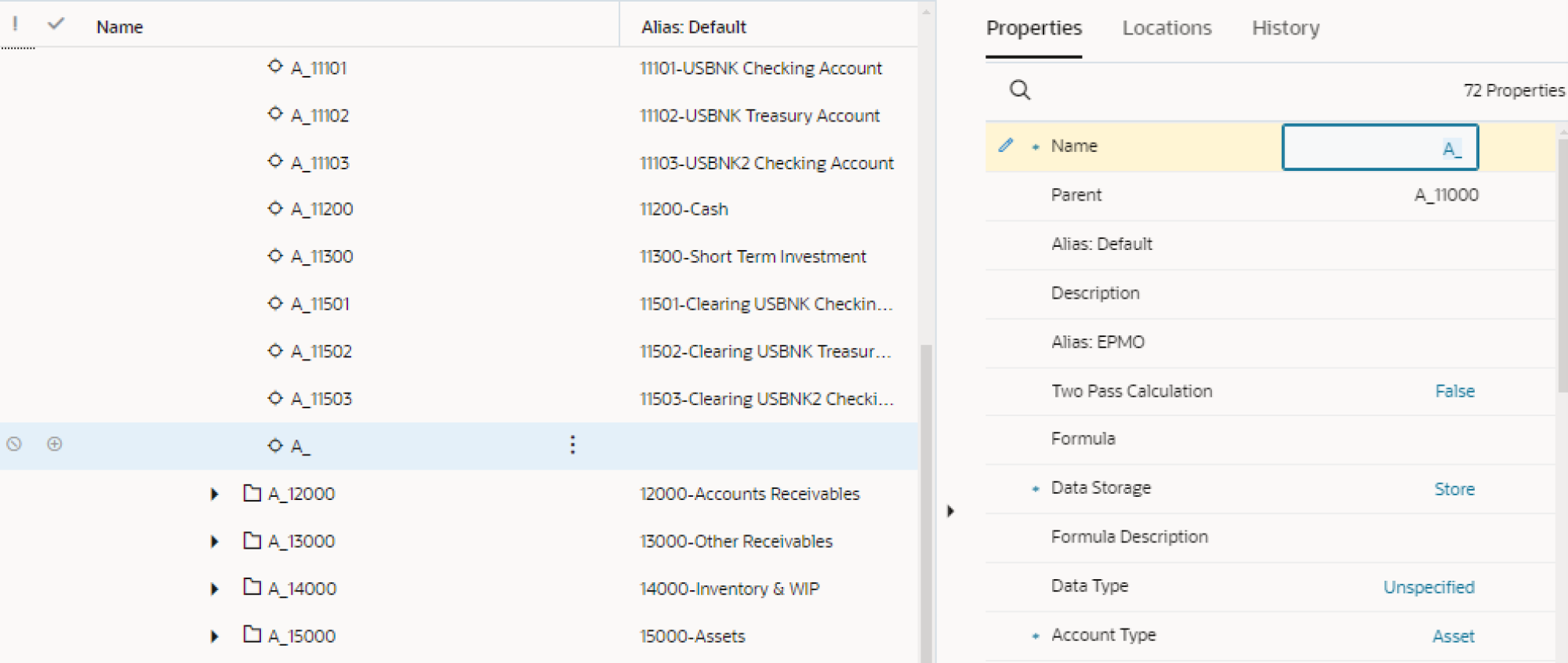
To take it a step further, we could modify the Core.Name expression to examine the previous sibling, isolate the numeric portion of the node name, add 1 to it, concatenate the prefix I want, and return a new string value. Voila! This returns the next available account number available. In this example, I configured EDM to calculate the next available account number based on the sibling, so EDM returned “A_11504”.
As a variation of this approach, you could modify the Core.Name expression to analyze the Parent node name and calculate the Child node name based on the pattern you require.
Figure 7 - Automating creation of next available account number
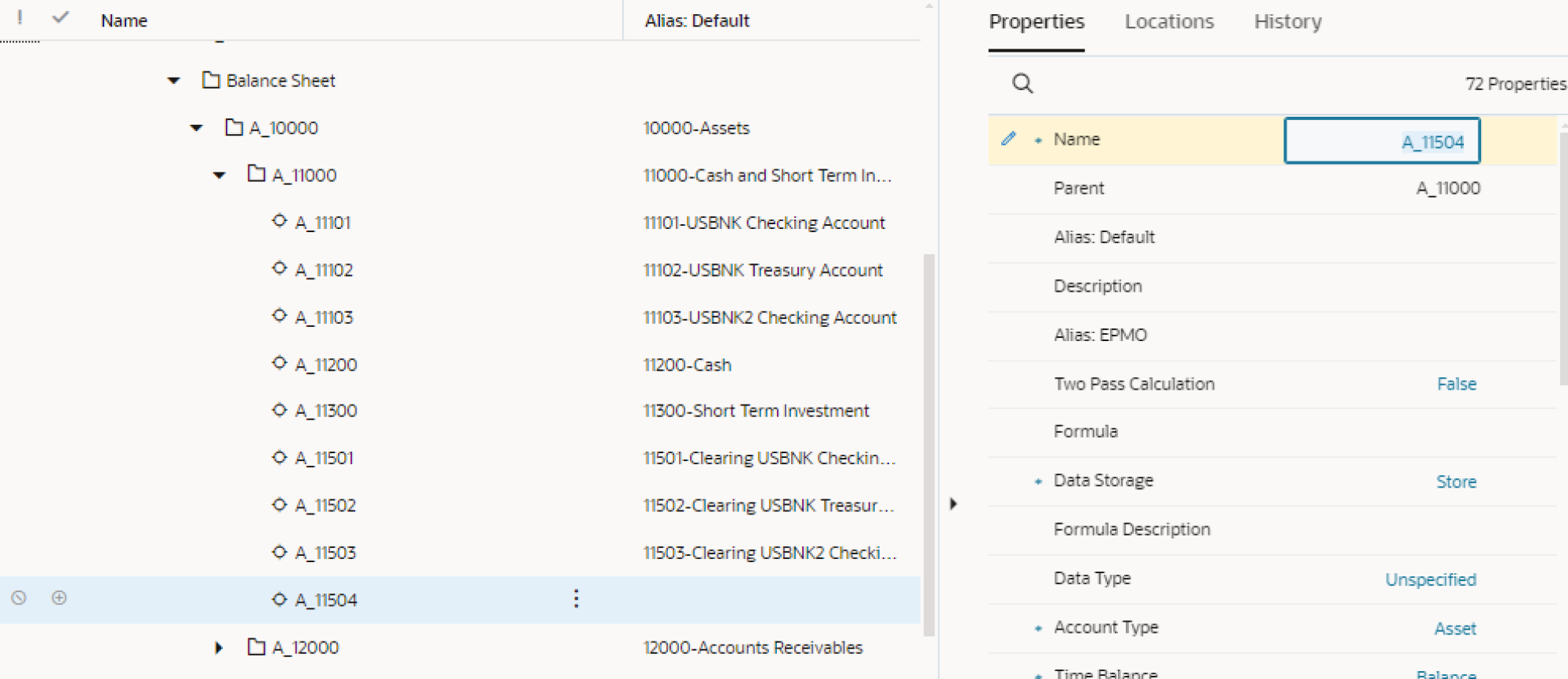
Another slick example is to calculate the node name based on other property values. In this example, the Name is generated by concatenating the Company and Account property values with a dash in the middle.
Figure 8 - Automatically create account name using Company and Account property values
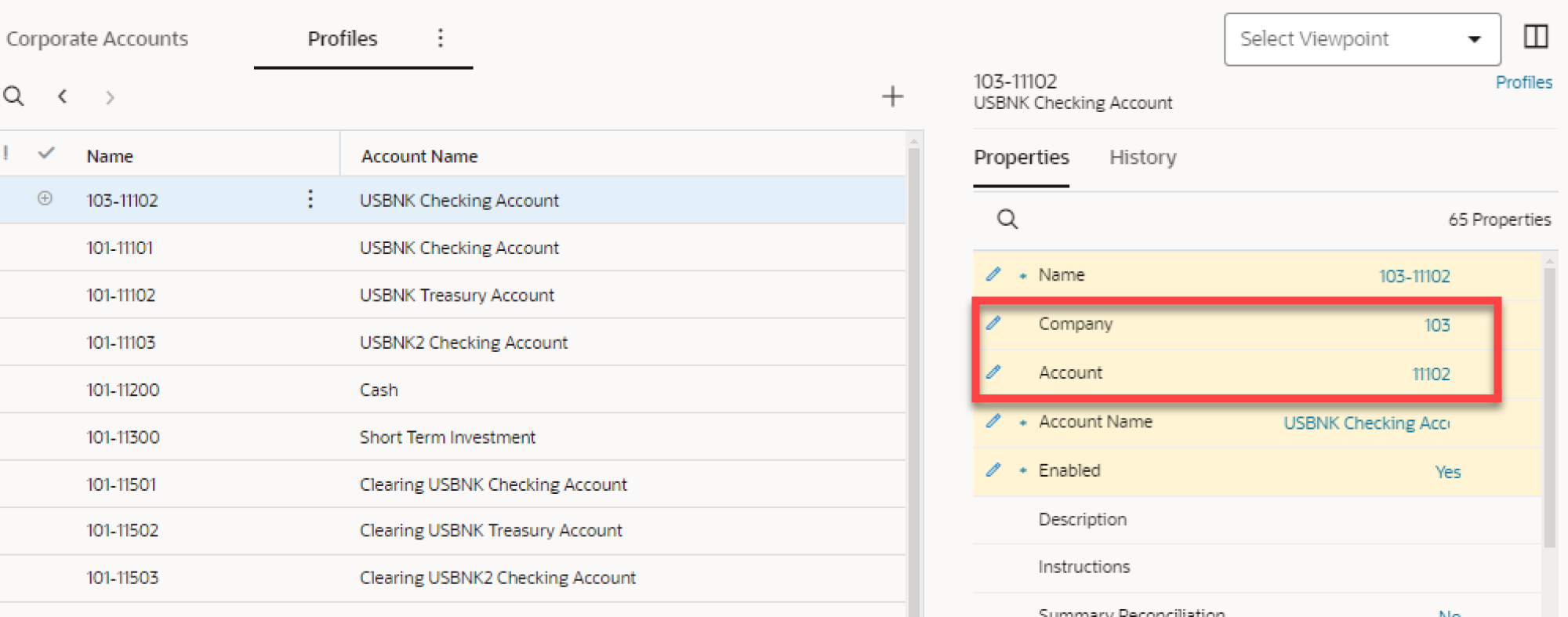
The possibilities are nearly endless with this new functionality. Another option is to generate the node name based on the Location of the node. And I didn’t even cover how to use Calculated Node Names in a request file (perhaps I will in a future blog post!).
I have only scratched the surface of the many new features in the EDM 24.03 release, but I believe I hit some of the bigger ones and I hope you found it useful. It continues to be an exciting time to understand new functionality being delivered in EDM and figure out the best ways to apply those features to provide value to our clients. Until next time!
About Oracle Enterprise Data Management (EDM)
Oracle Enterprise Data Management Cloud service is a standalone service that helps manage and govern changes to master, reference, and metadata across the enterprise. It manages business viewpoints, governs changes to them, simplifies data sharing to accelerate cloud deployment, and builds an authoritative source of enterprise information assets. Oracle Cloud EDM provides a powerful set of data stewardship, quality, governance, collaboration, comparison, and data sharing tools to help companies respond to change faster. It ensures that mission-critical enterprise data is accurate, consistent, contextually relevant, and ready to use across all business contexts.
